There are probably a myriad of reasons I’ve been infatuated with the Very Large Array in New Mexico. I finally was able to visit the VLA on my westward journey on U.S. Highway 60 from Socorro, New Mexico.
Simply put, the VLA is an array of 27 radio telescopes which are all connected together to emulate a huge radio telescope that is up to 22 miles in diameter.
I first became acquainted with the VLA in the movie “Contact” where it is used to receive extra terrestrial communications. (For other pop culture references, click here.) In real life, it doesn’t do that. Instead, it receives signals that optical telescopes can’t see. The scientists don’t “listen” to the VLA, the VLA creates images.
I stopped into the deserted visitor center on a cold but clear Saturday morning. After chatting with the woman staffing the post and looking at the exhibits, I went on the self-guided walking tour of the facility.
As I mentioned earlier, there are 27 of these dishes (with plans for expansion to 33) all arranged in a large “Y”. Each dish is huge at 82 feet in diameter and weighs over 200 tons. There are motors that point the antenna to the proper place in the sky. All of the dishes change position at the same time to point at the same part of space.
These dishes are constantly moving, sometimes slowly to compensate for the earth’s rotation, sometimes much faster to point at a different location in space. While I was standing next to this dish, it would point to a new location about every 30 seconds. And, when I looked at the other dishes in the distance, I could see them moving too.
The radio signals hit the dish and are then reflected up to another reflector that’s mounted above the dish. This concentrates the radio beam and reflects it again down into the thing that looks like a cone (called a horn).
There are actually 6 or 7 horns of different sizes, each one is sensitive to a certain type of signal. The largest horn is about 7 feet tall to give you a perspective on size. From there the radio signal is converted to digital and it sent via fiber optics to the “correlator” in the control building which combines the signals from all of the antennas.
The length of each leg of the “Y” can be adjusted, which acts like a zoom, by moving the dishes farther apart or closer together. These dual railroad tracks are used for that. The configuration of the array is changed every few weeks. There is an interesting video in the visitor center that shows it being done. To move a dish, it is unbolted from cement pylons and lifted by a special a machine and moved along the tracks to the new position.
Although the VLA is not used for extraterrestrial searches like in the movies, I’m sure if an alien world was broadcasting a signal, the VLA would eventually find it.
I spent several hours at the VLA site before heading westward on my trip.

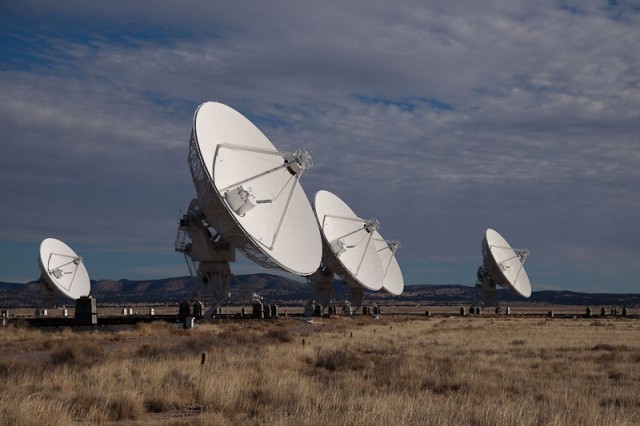
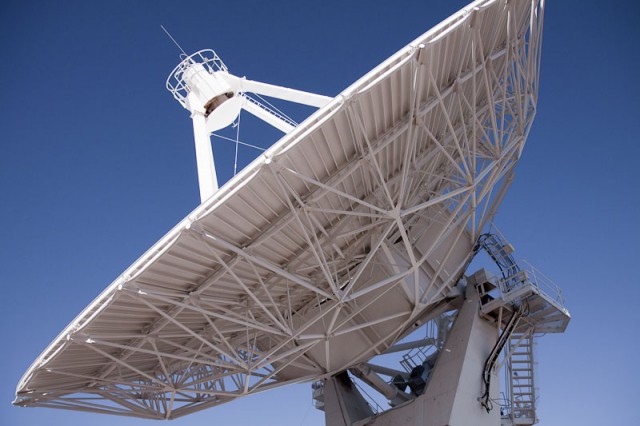

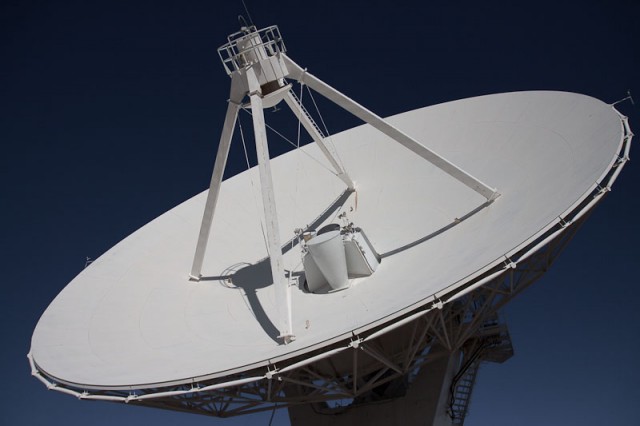
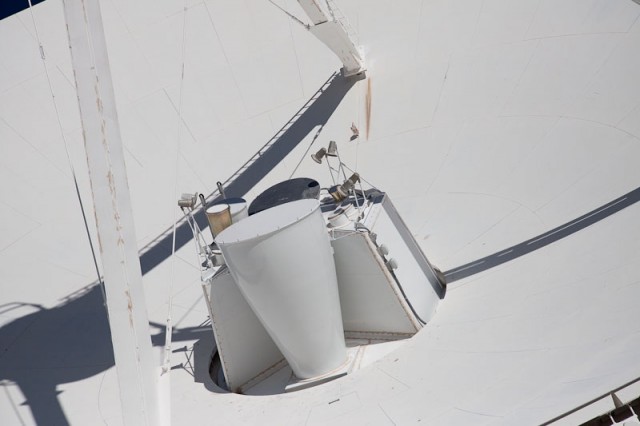
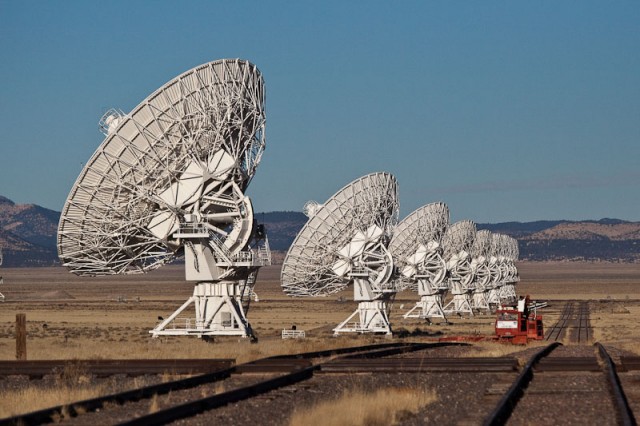
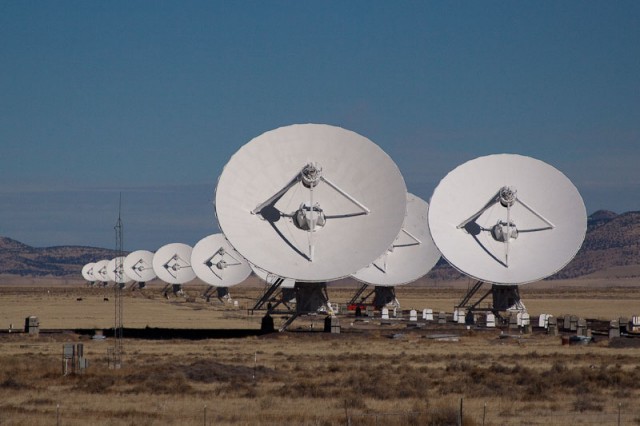
After reading this I was reading about SETI. Somewhere, I heard they once got a radio signal. It was just once in a certain area, but it seemed like it could possibly be legit. I wish I could find more information on it. Being curious, I’ll probably keep looking.
I guess they would have to figure out what a legit signal would be like.
This post inspired me to watch Contact again last night.
That is fantastic. I had no idea you could just walk around there.
Almost. On the self-guided walking tour, there are a few signs to dissuade people from walking around beyond certain boundaries. But there are no perimeter fences other than to keep cattle in place. And the US Highway runs right through one leg of the “Y”.
Once or twice a year, they have guided tours and they take you into the building that processes the signals and controls the antennas. I wasn’t able to do that when I was there. Almost everything else, the research, etc. is all handled over the internet. Most of the people at the site are technicians, maintenance people, and the “EMI Nazi”.